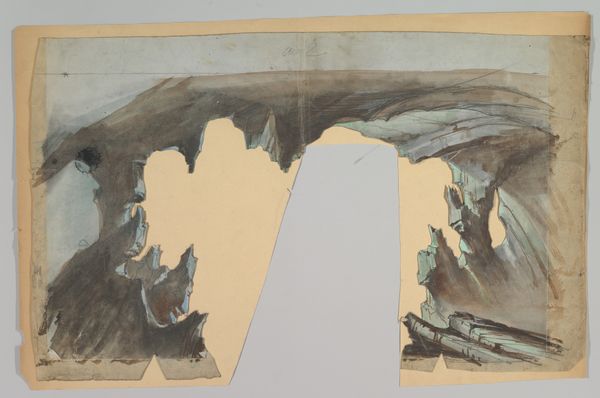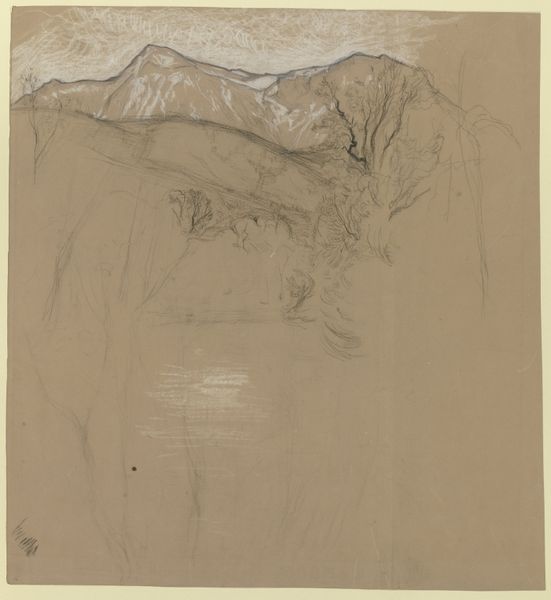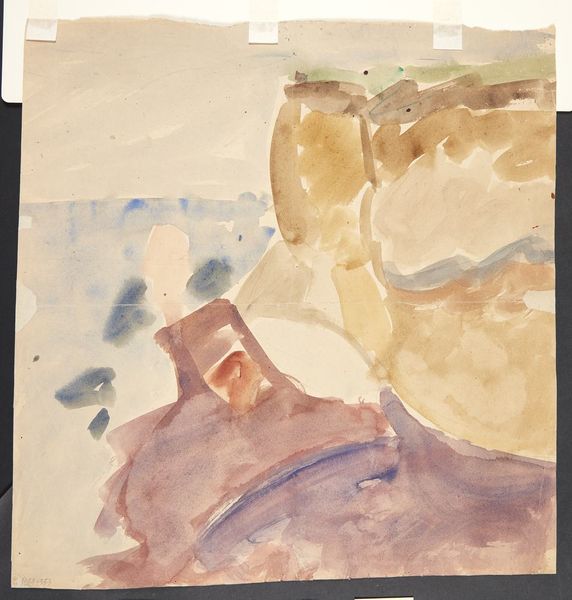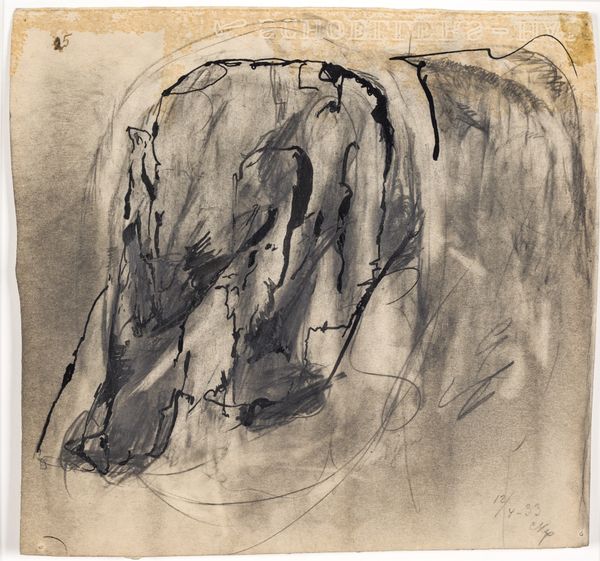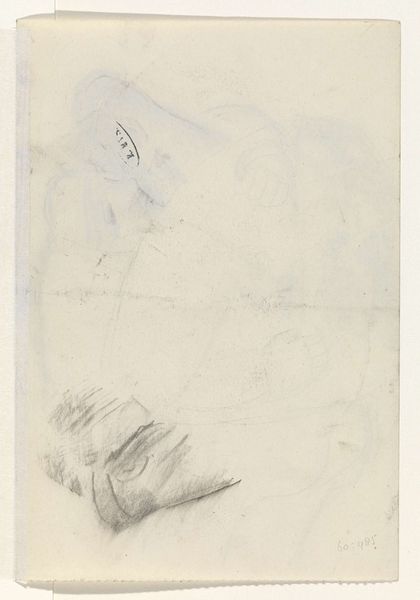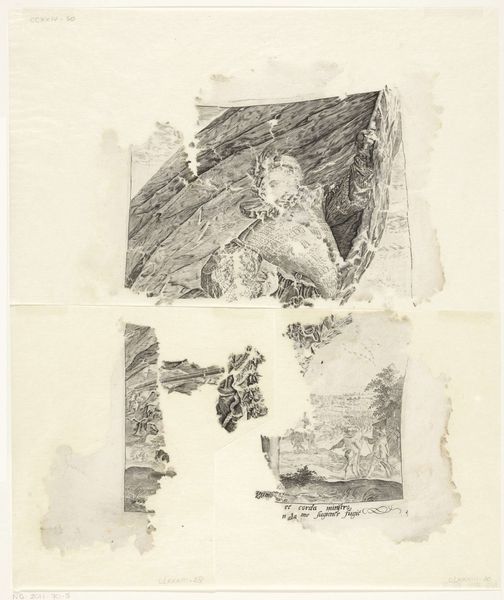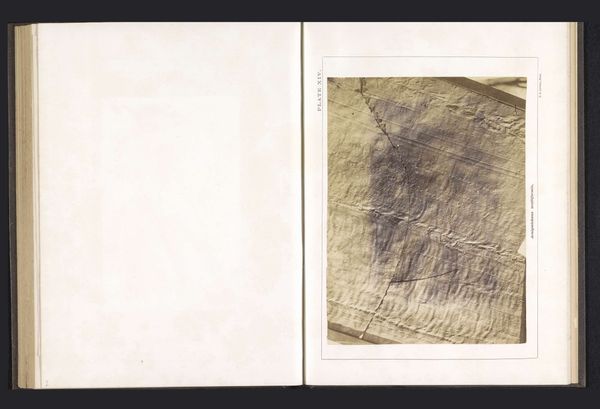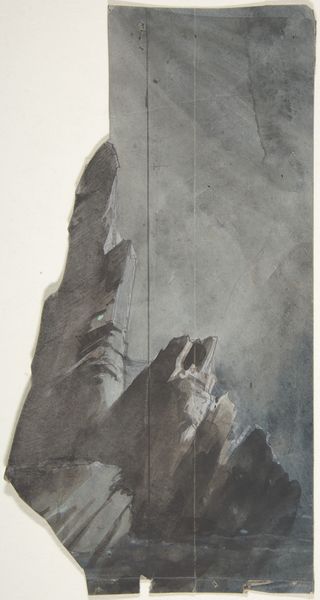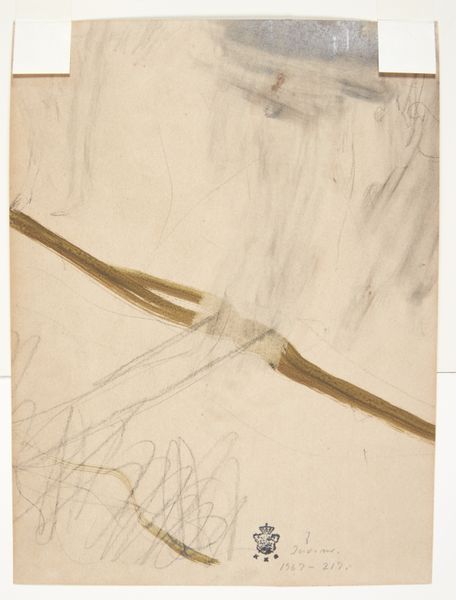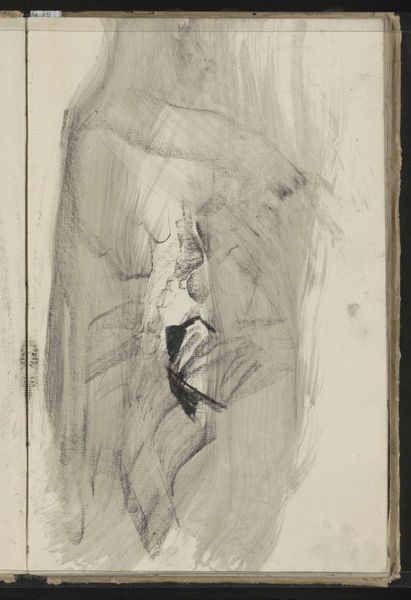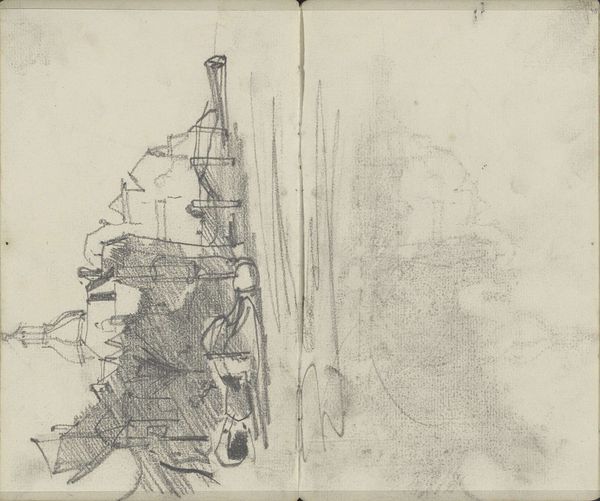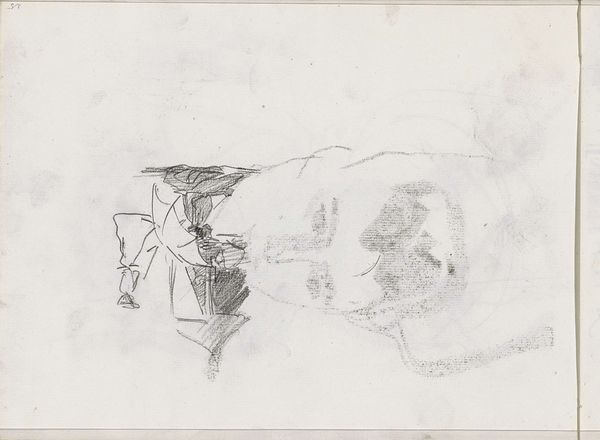
Dimensions: 158 mm (height) x 200 mm (width) (bladmaal)
Curator: Let’s look at Peter Hansen’s watercolor, "Trætop," made sometime between 1905 and 1910. Editor: It's interesting how little of the tree we see; mostly just the top. It feels very immediate, like a quick sketch capturing a fleeting impression. What can we learn from this fragment? Curator: Hansen’s work, though seemingly simple, participates in a broader artistic investigation into the changing relationship between humanity and the environment during that time. Consider how industrialization was impacting landscapes and perceptions of nature. Does the cropped nature of the image feel like alienation to you, as if we are losing our connection? Editor: I can see that. There is something about the fragment that makes the whole feel damaged, or incomplete. A quick glance can remind someone of the environment slowly disintegrating due to natural and human activities, climate change, pollution... It makes me feel very small, and makes the concept feel enormous and uncontainable at the same time. Curator: Exactly. And watercolor itself, with its delicate and flowing nature, can represent the fragility of ecological balance. The Impressionist style further blurs the lines, suggesting the ephemeral and ever-changing aspects of nature. Do you think Hansen’s decision to focus solely on the treetop challenges traditional landscape art that celebrates a mastered or cultivated vista? Editor: It does, definitely. Traditional landscape painting seems more about possession. Hansen’s piece is more observational and, dare I say, vulnerable. I hadn’t considered all of that just looking at it. Curator: Precisely! It's in this tension between observation, style, and historical context that the artwork becomes relevant, provoking contemplation on our relationship with the environment then and now. Editor: It's fascinating to see how much can be unpacked from what initially seemed like a simple sketch. Thanks for pointing out the connections between art, social context, and environmentalism!
Comments
No comments
Be the first to comment and join the conversation on the ultimate creative platform.
